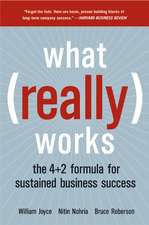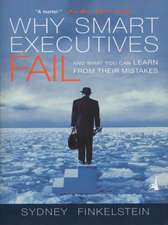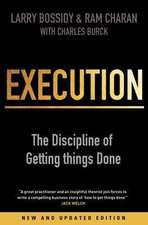Buy-In: Saving Your Good Idea from Getting Shot Down
Autor John P. Kotter, Lorne A. Whiteheaden Limba Engleză Hardback – 5 oct 2010
Vezi toate premiile Carte premiată
Axiom Business Book Awards (2011)
You've got a good idea. You know it could make a crucial difference for you, your organization, your community. You present it to the group, but get confounding questions, inane comments, and verbal bullets in return. Before you know what's happened, your idea is dead, shot down. You're furious. Everyone has lost: Those who would have benefited from your proposal. You. Your company. Perhaps even the country.
It doesn't have to be this way, maintain John Kotter and Lorne Whitehead. In Buy-In, they reveal how to win the support your idea needs to deliver valuable results. The key? Understand the generic attack strategies that naysayers and obfuscators deploy time and time again. Then engage these adversaries with tactics tailored to each strategy. By "inviting in the lions" to critique your idea--and being prepared for them--you'll capture busy people's attention, help them grasp your proposal's value, and secure their commitment to implementing the solution.
The book presents a fresh and amusing fictional narrative showing attack strategies in action. It then provides several specific counterstrategies for each basic category the authors have defined--including:
· Death-by-delay: Your enemies push discussion of your idea so far into the future it's forgotten.
· Confusion: They present so much data that confidence in your proposal dies.
· Fearmongering: Critics catalyze irrational anxieties about your idea.
· Character assassination: They slam your reputation and credibility.
Smart, practical, and filled with useful advice, Buy-In equips you to anticipate and combat attacks--so your good idea makes it through to make a positive change.
It doesn't have to be this way, maintain John Kotter and Lorne Whitehead. In Buy-In, they reveal how to win the support your idea needs to deliver valuable results. The key? Understand the generic attack strategies that naysayers and obfuscators deploy time and time again. Then engage these adversaries with tactics tailored to each strategy. By "inviting in the lions" to critique your idea--and being prepared for them--you'll capture busy people's attention, help them grasp your proposal's value, and secure their commitment to implementing the solution.
The book presents a fresh and amusing fictional narrative showing attack strategies in action. It then provides several specific counterstrategies for each basic category the authors have defined--including:
· Death-by-delay: Your enemies push discussion of your idea so far into the future it's forgotten.
· Confusion: They present so much data that confidence in your proposal dies.
· Fearmongering: Critics catalyze irrational anxieties about your idea.
· Character assassination: They slam your reputation and credibility.
Smart, practical, and filled with useful advice, Buy-In equips you to anticipate and combat attacks--so your good idea makes it through to make a positive change.
Preț: 133.05 lei
Nou
Puncte Express: 200
Preț estimativ în valută:
25.46€ • 26.58$ • 21.07£
25.46€ • 26.58$ • 21.07£
Carte disponibilă
Livrare economică 14-28 martie
Preluare comenzi: 021 569.72.76
Specificații
ISBN-13: 9781422157299
ISBN-10: 1422157296
Pagini: 208
Dimensiuni: 140 x 210 x 23 mm
Greutate: 0.32 kg
Editura: Harvard Business Review
Colecția Harvard Business Review Press
Locul publicării:United Kingdom
ISBN-10: 1422157296
Pagini: 208
Dimensiuni: 140 x 210 x 23 mm
Greutate: 0.32 kg
Editura: Harvard Business Review
Colecția Harvard Business Review Press
Locul publicării:United Kingdom
Cuprins
Table of Contents
Preface
Part One: The Centerville Story
1. The Death of a Good Plan 12
2. Saving the Day in Centerville, Part 1 21
3. Saving the Day, Part II 54
4. Saving the Day, Part III 72
Part Two: The Method
5. Four Ways to Kill Good Ideas 73
6. A Counterintuitive Strategy for
Saving Your Good Idea 89
7. 24 Attacks & 24 Responses 109
8. How The Method Helps Large-scale
Change 133
9. A Quick Reference Guide for Saving
Good Ideas. 143
Preface
Part One: The Centerville Story
1. The Death of a Good Plan 12
2. Saving the Day in Centerville, Part 1 21
3. Saving the Day, Part II 54
4. Saving the Day, Part III 72
Part Two: The Method
5. Four Ways to Kill Good Ideas 73
6. A Counterintuitive Strategy for
Saving Your Good Idea 89
7. 24 Attacks & 24 Responses 109
8. How The Method Helps Large-scale
Change 133
9. A Quick Reference Guide for Saving
Good Ideas. 143
Notă biografică
John P. Kotter is the Konosuke Matsushita Professor of Leadership, Emeritus, at Harvard Business School and is widely considered the world's foremost authority on leadership and change. Lorne A. Whitehead is Leader of Education Innovation at the University of British Columbia, where he has also been a professor and the NSERC/3M Chairholder in the Department of Physics and Astronomy.
Extras
Preface
Most people skip Prefaces (occasionally feeling guilty as they do so) because they are not particularly interested in an introduction to a book, its history, any research behind it, or the writers. If you are a skipper, just flip to page 13. And don’t feel guilty.
We have all experienced the basic problem addressed here, and in a very personal way, because it is an old, common, human, and increasingly important problem. You need sufficient support for a good idea or the right decision will not be accepted and implemented well. You or your allies present the plan. You present it well. Then, along with thoughtful issues being raised, come the confounding questions, inane comments, and verbal bullets—either directly at you or, even worse, behind your back. It matters not that the idea clearly makes sense. It matters not that the idea is needed, insightful, innovative, and logical. It matters not even if the issues involved are extremely important to a business, an individual, or even a nation. The proposal is still shot down, accepted but without sufficient support to gain all of its true benefits, or slowly dies a sad death.
You’ve been there, both on and off the job. It can be maddening. You can end up flustered, embarrassed, or furious. All those who would benefit from the idea lose. You lose. In an extreme case, a whole company or nation may lose. And, as we shall demonstrate in this book, it doesn’t have to be that way.
The argument put forth here, summarized simply, is this:
1. The competent creation and implementation of good ideas is a basic life skill, relevant to the 21 year old college graduate, the 55 year old corporate CEO, and virtually everyone else. This skill, or the lack of it, affects the economy, governments, families, and most certainly our own lives. This point may be obvious, but less obvious are two additional points. First, the amount of thought and education put into making good decisions is far higher today than the knowledge and instruction on how to implement those ideas. In the world of business, for example, the field of strategy has made huge advances in the past twenty years. The field of strategy implementation, in contrast, has made much less progress. Second, and even more overlooked, is that our insufficient knowledge about how to get good new ideas accepted by others—a central piece of making anything happen--is becoming more and more of a problem as the world changes faster and faster.
2. Change is one of the most powerful forces shaping everything in the world in which we live. With change swirling around us, we need to change more often, which demands good ideas---ideas in the form of plans, proposals, or strategies. But, more so, we need effective action that can make those ideas be used. This is true regardless of the issue: from pitching an idea to obtain modest resources to exploring an innovative new product area to changing the health care system in the U.S. And one of the steepest walls which stop us from making increasingly needed ideas happen is the buy-in obstacle.
3. It would be wonderful if the good ideas you have, on or off the job, could simply stand on their own. But far too often, this is not the case. Whether it’s a big bill before Congress, an innovative corporate strategy, or tonight’s plan for dinner and the movies, sensible ideas can be ignored, shot down, or, more often, wounded so badly that they produce little gain. A wounded idea might still get 51% of the relevant heads nodding approval. But when true buy-in is thin, the smallest of obstacles can eventually derail a supposedly agreed-upon proposal.
4. The questions, concerns, and arguments that wound or kill truly good ideas may seem to be limitless, but for all practical purposes they are not. There are a few dozen arguments used against good ideas that are very generic in their form, can be used in virtually any setting, and can be very powerful. There are also a set of generic responses, all based on a single, somewhat counterintuitive method, that can build strong support for good ideas, regardless of the setting (on or off the job) or the scale of the issues (trying to get buy-in for a new corporate strategy or for a clever proposal to spend $100).
5. Although much has been written on buy-in or related topics (persuasion, communication), the method we offer here, and the 24 very specific responses to 24 common generic attacks, have a power and efficiency (buy-in achieved for resources used) that may be unique, and thus of great potential use to those pursuing innovation, strategy implementation, or simply trying to get one good idea accepted by an after-work, pick-up basketball team. In a world in which we all have limited time and economic resources, unusual power and efficiency can mark the difference between what is practical and what is not, between what creates success and what does not.
Most people skip Prefaces (occasionally feeling guilty as they do so) because they are not particularly interested in an introduction to a book, its history, any research behind it, or the writers. If you are a skipper, just flip to page 13. And don’t feel guilty.
We have all experienced the basic problem addressed here, and in a very personal way, because it is an old, common, human, and increasingly important problem. You need sufficient support for a good idea or the right decision will not be accepted and implemented well. You or your allies present the plan. You present it well. Then, along with thoughtful issues being raised, come the confounding questions, inane comments, and verbal bullets—either directly at you or, even worse, behind your back. It matters not that the idea clearly makes sense. It matters not that the idea is needed, insightful, innovative, and logical. It matters not even if the issues involved are extremely important to a business, an individual, or even a nation. The proposal is still shot down, accepted but without sufficient support to gain all of its true benefits, or slowly dies a sad death.
You’ve been there, both on and off the job. It can be maddening. You can end up flustered, embarrassed, or furious. All those who would benefit from the idea lose. You lose. In an extreme case, a whole company or nation may lose. And, as we shall demonstrate in this book, it doesn’t have to be that way.
The argument put forth here, summarized simply, is this:
1. The competent creation and implementation of good ideas is a basic life skill, relevant to the 21 year old college graduate, the 55 year old corporate CEO, and virtually everyone else. This skill, or the lack of it, affects the economy, governments, families, and most certainly our own lives. This point may be obvious, but less obvious are two additional points. First, the amount of thought and education put into making good decisions is far higher today than the knowledge and instruction on how to implement those ideas. In the world of business, for example, the field of strategy has made huge advances in the past twenty years. The field of strategy implementation, in contrast, has made much less progress. Second, and even more overlooked, is that our insufficient knowledge about how to get good new ideas accepted by others—a central piece of making anything happen--is becoming more and more of a problem as the world changes faster and faster.
2. Change is one of the most powerful forces shaping everything in the world in which we live. With change swirling around us, we need to change more often, which demands good ideas---ideas in the form of plans, proposals, or strategies. But, more so, we need effective action that can make those ideas be used. This is true regardless of the issue: from pitching an idea to obtain modest resources to exploring an innovative new product area to changing the health care system in the U.S. And one of the steepest walls which stop us from making increasingly needed ideas happen is the buy-in obstacle.
3. It would be wonderful if the good ideas you have, on or off the job, could simply stand on their own. But far too often, this is not the case. Whether it’s a big bill before Congress, an innovative corporate strategy, or tonight’s plan for dinner and the movies, sensible ideas can be ignored, shot down, or, more often, wounded so badly that they produce little gain. A wounded idea might still get 51% of the relevant heads nodding approval. But when true buy-in is thin, the smallest of obstacles can eventually derail a supposedly agreed-upon proposal.
4. The questions, concerns, and arguments that wound or kill truly good ideas may seem to be limitless, but for all practical purposes they are not. There are a few dozen arguments used against good ideas that are very generic in their form, can be used in virtually any setting, and can be very powerful. There are also a set of generic responses, all based on a single, somewhat counterintuitive method, that can build strong support for good ideas, regardless of the setting (on or off the job) or the scale of the issues (trying to get buy-in for a new corporate strategy or for a clever proposal to spend $100).
5. Although much has been written on buy-in or related topics (persuasion, communication), the method we offer here, and the 24 very specific responses to 24 common generic attacks, have a power and efficiency (buy-in achieved for resources used) that may be unique, and thus of great potential use to those pursuing innovation, strategy implementation, or simply trying to get one good idea accepted by an after-work, pick-up basketball team. In a world in which we all have limited time and economic resources, unusual power and efficiency can mark the difference between what is practical and what is not, between what creates success and what does not.
Premii
- Axiom Business Book Awards Bronze Medal Winner, 2011






















